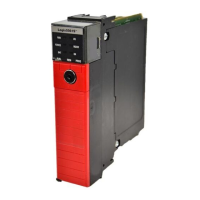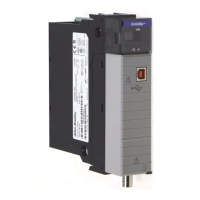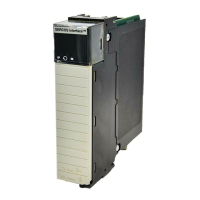40 Rockwell Automation Publication 1756-RM093J-EN-P - April 2018
Chapter 5 Characteristics of Safety Tags, the Safety Task, and Safety Programs
For Cat 1, Cat 2, and SIL 2 safety functions, the Guard I/O safety modules need
specific configurations within the GuardLogix project. In this example, inputs 0,
1, 6, 7, 8, 9, 10, and 11 are part of a CAT 1, 2 or SIL 2 safety function, because
they are configured as Single. Inputs 2 and 3, as well as 4 and 5 are part of a CAT
3, CAT 4, or SIL 3 safety function, because they are configured as Equivalent.
Figure 13 - Input Configuration
Field Value
Type Si ng le
Discrepancy Time N/A
Point Mode Safety Pulse Test
Test Source Set values based on how the field device is physically wired to the module. To make sure
the test source is properly enabled, open and view settings on the Test Output tab.
Input Delay Time User input based on field device characteristics.
The onboard pulse test outputs (T0…Tx) are typically used with field
devices that have mechanical contacts. If a safety device that has electronic
outputs is used (feeding safety inputs), they must have the appropriate
safety ratings.
If you are using GuardLogix Safety Application Instructions to detect
discrepancy faults of dual-channel devices, be sure to configure your safety
input modules as single, not equivalent or complementary. If configured for
equivalent or complementary, discrepency faults at the safety instruction
are masked by the input module. These instructions provide all dual-
channel functionality necessary for PLd (Cat. 3) or PLe (Cat. 4) safety
functions. Either the instruction or the module can provide the discrepancy
checking typically required for SIL3 safety functions.
Refer to the GuardLogix Safety Application Instruction Set Reference
Manual, publication 1756-RM095
.

